
In the initial position of the applet it represents a circle, and when you move the cursor the vertical position of a segment changes.
When the vertical position (x) changes we want to calculate the segment a:
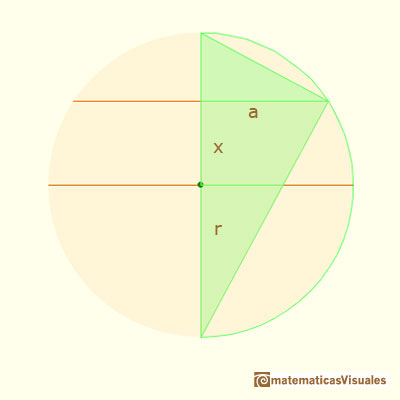
Because our goal is to calculate the surface of the section of the sphere when we change the distance from the center of the sphere to the section. You can see and rotate the sphere clicking and dragging over the applet.
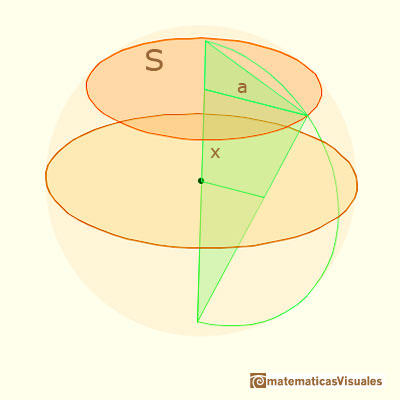
Using the Pythagorean Theorem we can calculate the radius of the section:
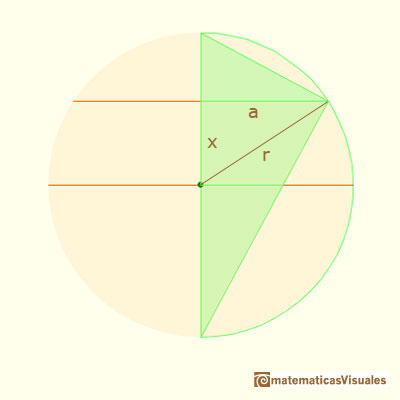
Then the surface of the section of the sphere is:

Then our goal is achieved, but we can have another approach to calculate the chord (or radius, a) without using the Pythagorean Theorem. And this approach will permit us to use similarity of triangles and to talk about the Geometric Mean.
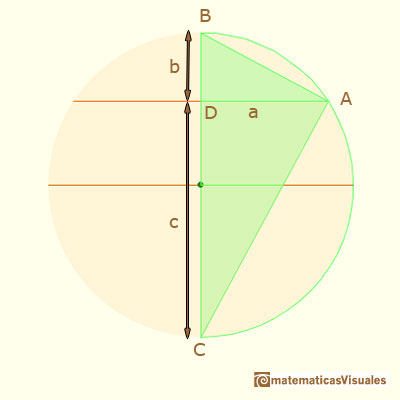
We have three right triangles that are similar. We are interested in two of them:
We can write the proportion (we want to know the value of
Then, the value of
We say that
The geometric mean of two positive numbers is related with the arithmetic mean:
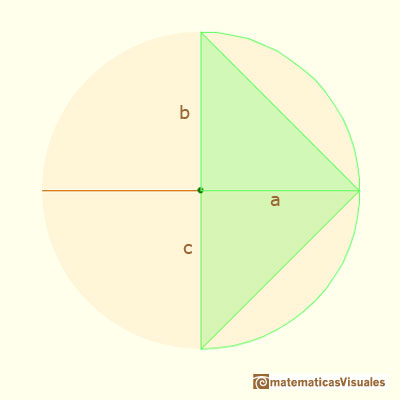
When are the geometric mean equals to the arithmetic mean?
Coming back to our initial subject:
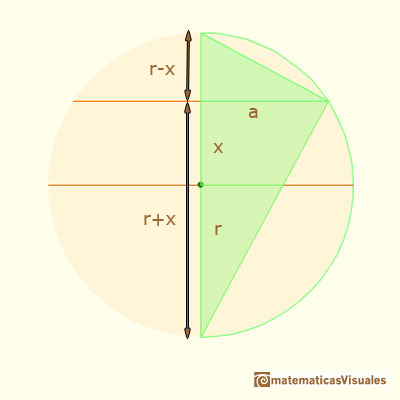
We are going to use this result in two interesting applications of Cavalieri's Theorem: How to calculate the volume of a sphere and Two Surprising Theorems on Cavalieri Congruence one article by Howard Eves in which he constructed a tetrahedron and he used Cavalieri's Theorem to calculate the volume of a sphere.
You can play with these two applets about cross-sections of a sphere:
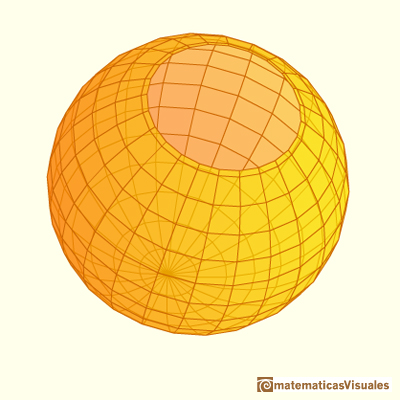
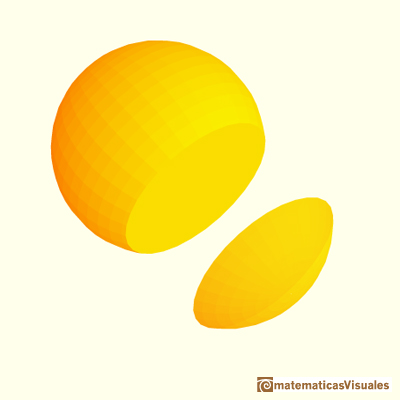
REFERENCES
 NEXT
NEXT
 PREVIOUS
PREVIOUS
MORE LINKS

























